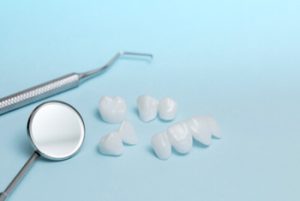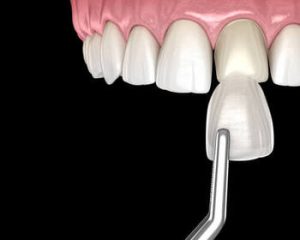Not every smile concern requires a major transformation. For many patients looking to improve the appearance of their teeth, the dental bonding procedure offers a simple, cost-effective, and minimally invasive solution. Whether you’re dealing with slight chips, discolouration, or slightly shorter teeth, dental bonding can help enhance your smile with subtle, natural-looking results. It’s also a popular alternative to composite veneers for patients seeking a faster, less invasive option.
In this article, we’ll explore the full dental bonding procedure, including what to expect during treatment, the materials involved, benefits, risks, and how it compares to other cosmetic procedures like veneers. We’ll also look at who makes a good candidate and why this cosmetic dental option may be the right solution for your smile goals.
Understanding the Dental Bonding Process
Dental bonding, also known as tooth bonding or composite bonding, refers to a cosmetic dental procedure where a tooth-coloured resin is placed on the tooth’s surface and solidified using a curing light (often UV light). This process bonds the resin material to the tooth, effectively repairing cosmetic imperfections and restoring a more aesthetically pleasing appearance.
It is particularly useful for correcting minor, aesthetic flaws such as:
- Chipped or cracked teeth
- Gaps between teeth
- Uneven or worn edges
- Discoloured teeth that don’t respond to whitening
- Irregular tooth shapes
The bonding procedure is commonly used in both cosmetic dental and restorative dentistry, helping to preserve healthy teeth while improving their visual appeal.
The Dental Bonding Procedure Step by Step
Here’s a breakdown of what you can typically expect during the dental bonding process:
1. Initial Consultation
Before any treatment begins, a dental professional will assess your oral health and cosmetic goals during an initial consultation. This step helps determine whether dental bonding is appropriate for your needs.
They’ll also evaluate for any underlying oral health concerns, like advanced tooth decay or gum infections that need to be addressed before cosmetic treatment begins.
2. Preparation
In contrast to several other cosmetic procedures, tooth bonding requires little to no preparation. Typically, anaesthesia isn’t required unless bonding involves filling a decayed tooth or repairing a chip near a nerve.
To prepare the tooth, the dentist will slightly texture the tooth’s surface and use a conditioning agent to help the bonding substance properly attach.
3. Application of the Resin Material
The dentist will then select a tooth-coloured resin to match your teeth’s natural shade as closely as possible. This resin colour matching helps the bonded teeth harmonise naturally with your surrounding teeth.
The composite resin material is applied in layers and sculpted into the desired shape.
4. Curing the Resin
Once the material has been moulded into the proper shape, a special UV light is used to harden the resin. This light activates the bonding process, adhering the resin to the surface of the tooth.
5. Refining and Polishing the Bond
Once the resin is fully set, the dentist proceeds to make any final adjustments to refine the shape, remove any sharp edges, and ensure the entire surface feels smooth and natural. The bonded area is then polished until it matches the sheen of your natural teeth.
The entire bonding procedure can usually be completed in one visit and often takes between 30 to 60 minutes per tooth.
Is Dental Bonding Painful?
Most patients report little to no discomfort during the procedure. Since it’s non-invasive and doesn’t typically require anaesthesia, dental bonding is considered one of the least painful cosmetic dental treatments available.
That said, sensitivity may occur temporarily, especially if the bonding was done near the gum line or involved an exposed tooth root. This usually subsides within a few days.
Who Is a Good Candidate for Tooth Bonding?
 This treatment is well-suited for individuals with:
This treatment is well-suited for individuals with:
- Consistent oral care and absence of gum problems
- Minor cosmetic imperfections like chips or gaps
- Reasonably healthy teeth
- No severe bite misalignment
It may not be the best option for those with significant damage or who habitually bite hard objects, as bonded areas are not as strong as natural enamel. People with poor oral habits, like nail-biting or chewing on pens, may risk damaging the bonded teeth.
For more extensive dental issues or those looking for longer-lasting results, other cosmetic procedures such as porcelain veneers or crowns may be recommended.
Dental Bonding vs Other Cosmetic Procedures
If you’re seeking to enhance your smile, dental bonding is just one of many tools in modern dentistry. Here’s how it compares:
Dental Bonding vs Composite Veneers
- Similarities: Both use composite resin and can be completed in a single visit.
- Key distinction: Composite veneers are designed to conceal the full front area of a tooth and are more sculpted for uniformity. Bonding is typically used for spot treatments.
Dental Bonding vs Porcelain Veneers
- Porcelain veneers are custom-made porcelain restorations that require multiple appointments and tooth preparation.
- Although they offer enhanced durability and stain resistance compared to bonding, they are also significantly more expensive.
- Veneers are ideal for patients with more extensive cosmetic goals or differing traits among multiple teeth.
Advantages of Dental Bonding
Dental bonding offers many benefits that make it commonly preferred by both dental professionals and their patients:
- Minimally invasive: Preserves the structure of the natural teeth
- Cost-effective: More affordable than porcelain options
- Quick: Often completed in one visit
- Customisable: Matched to the natural colour and shape of your teeth
- Completely reversible: Doesn’t require permanent changes to the tooth
- Great for minor flaws: Ideal for fixing slight chips or irregularities
It’s an excellent stepping stone for patients exploring cosmetic dental treatments for the first time.
Potential Limitations
Despite the many benefits, it’s important to understand the limitations of composite bonding:
- Less durable than porcelain: May chip or stain over time
- Lifespan of 3–10 years: Depending on care and location in the mouth
- Not suitable for all cases: Doesn’t replace the function of crowns or orthodontics
- Can stain from cigarette smoke, red wine, or coffee: Just like natural teeth, sometimes more so
Your dentist will guide you toward a personalised treatment plan based on your cosmetic goals, oral habits, and the condition of your teeth.
How to Care for Bonded Teeth
- To prolong the results of your bonding procedure, proper care is essential. Here are some good oral hygiene practices to follow: Gently brush your teeth twice daily using a toothbrush with soft bristles and fluoride toothpaste
- Make flossing a daily habit to clear plaque buildup between your teeth
- Refrain from chewing on hard items such as ice, pens, or fingernails
- Avoid cigarette smoke and staining foods
- Schedule regular check-ups with your dentist
By maintaining sound oral hygiene and daily habits, you can maintain the look and function of your bonded teeth for many years.
Dental Bonding Cost in Australia
Several elements can influence the price of dental bonding, including:
- Number of teeth being treated
- The extent of the cosmetic work
- Whether it’s for aesthetic or restorative purposes
- Your location and the dental professional’s fees
Because it’s often classified as a cosmetic dental procedure, private health insurance may not fully cover the cost unless it’s part of restorative dentistry due to trauma or decay.
Is Dental Bonding the Right Solution for You?
 Choosing the right cosmetic procedure depends on your dental issues, desired shape or look, and long-term oral health goals. Dental bonding may be the ideal option if:
Choosing the right cosmetic procedure depends on your dental issues, desired shape or look, and long-term oral health goals. Dental bonding may be the ideal option if:
- You want to fix cosmetic imperfections quickly and affordably
- You’re not ready to commit to more permanent treatments like veneers
- You prefer a minimally invasive solution with many benefits
Your dentist can walk you through the bonding procedure in detail and help determine whether it’s the right choice based on your individual case.
Final Thoughts
Dental bonding is a straightforward, effective dental procedure that helps patients achieve a new smile with minimal hassle. Whether you’re trying to repair slight chips, reshape your teeth, or close small gaps, this composite procedure delivers subtle yet noticeable results.
By understanding what the procedure involves and how to care for bonded teeth properly, you’ll be better equipped to make informed decisions about your cosmetic dental journey. With just one visit, you can take a confident step toward your dream smile, without compromising your natural teeth or breaking the bank.
If you’re concerned about chipped or discoloured teeth or want to prevent cosmetic issues from getting worse, book a consultation with Advanced Dental Care Dubbo or call us at (02) 6188 7103.
Resources
Cleveland Clinic (2022). ‘Dental Bonding’. Cleveland, OH: Cleveland Clinic. Reviewed 14 April.
https://my.clevelandclinic.org/health/treatments/10922-dental-bonding
Colgate Editors (2023). ‘Teeth Bonding Disadvantages to Consider’. New York, NY: Colgate-Palmolive. 9 January.
https://www.colgate.com/en-us/oral-health/bonding/teeth-bonding-disadvantages-to-consider
Colgate Editors (2023). ‘Teeth Bonding for Gaps Between Your Front Teeth’. New York, NY: Colgate-Palmolive. 9 January.
https://www.colgate.com/en-us/oral-health/bonding/teeth-bonding-for-gaps-between-your-front-teeth







